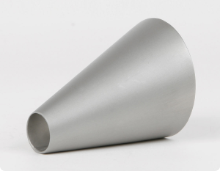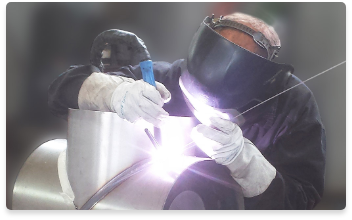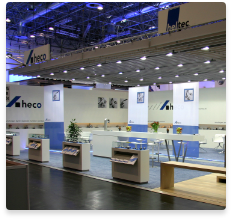


- Butt welding fittings
- bends
- T- X- Y- pieces
- T- and Y-bends
- reducers
- caps and heads
- collars
- branch saddles
- orbital fittings
- ANSI / ASME
- Industrial valves
- ball valves
- actuators
- drain cocks
- gate valves
- globe valves
- non-return valves
- Y-strainers
- control technology
- Flanges
- welding neck flanges
- threaded flanges
- blind flanges
- plate flanges
- loose plate flanges
- collars
- flange-fittings
- ANSI/ ASME
- other
- Systems
- TEEKAY
- Victaulic
- press fittings
- quick couplings
- clamp connections
- cutting rings
- DIN 11864/ DIN 11853
- railing construction
- Beverage fittings
- unions
- fittings
- pipe clamps
- Tri-Clamp
- valves & cocks
- flange connections
- inspection glasses
- filter & strainers
- spray balls

Aseptic-male partAGS



Aseptic-male part DIN 11864-1 design A
Aseptic-Threaded Coupling DIN 11864-1
for the Biotechnological, Pharmasuitical, Chemical- Industry
Features
| Type | Description |
|---|---|
| Pipe Dimensions | DIN 11866 Row A + B as well as DIN 11850 (Row 2) |
| Form A | produced with punctuation for O-Rings |
| Materials | AISI 316L/ 1.4404, optional 1.4435 (Ferrit < 0,5%) |
| Locknut | Stainless Steel AISI 304, optional AISI 316L |
| O-Rings | EPDM, VMQ, FKM |
| Surfaces | Ra inner < 0,8 µm, Ra outer < 1,6 µm (H3) |
| sizes | DIN-DN 10-150, ISO-DN 8-100 |
| DIN 11864 <> DIN 11853 |
|---|
The aseptic and flange connections according to DIN 11864-2 respectively
DIN 11853-2 are compatible and only differenciate in axial length
| Assembling |
|---|
When assembled the O-Ring is inserted in the coupling adaptor in which the O-Ring will hold itself.
The collar flange is then placed against it so that both flanges engage each other.
The flanges and the O-ring are therefore coaxially centered. After that, the
screws are inserted through the holes drilled in the flanges so that the
heads of the screws are on the outer surface of one flange and the threads of the screws
stick out of the other flange. The nuts are screwed onto these threads and
evenly tightened until the faces of the flanges come into contact with each other. The
O-ring is deformed by this so that a smooth port free of dead space and a sealed connection are produced.
Usable Pressure
at 140°C and with the usage of suitable connections
| Pipe-AØ | bar |
|---|---|
| up to 41 mm | max. 40 bar |
| 42,4 - 101,6 mm | max. 25 bar |
| 104 - 114,3 mm | max. 16 bar |
extended product description
Stainless steel DIN 11864/ DIN 11853 pipe unions male parts
Aseptic-male partAGS

Aseptic-Threaded Coupling DIN 11864-1
for the Biotechnological, Pharmasuitical, Chemical- Industry
Features
| Type | Description |
|---|---|
| Pipe Dimensions | DIN 11866 Row A + B as well as DIN 11850 (Row 2) |
| Form A | produced with punctuation for O-Rings |
| Materials | AISI 316L/ 1.4404, optional 1.4435 (Ferrit < 0,5%) |
| Locknut | Stainless Steel AISI 304, optional AISI 316L |
| O-Rings | EPDM, VMQ, FKM |
| Surfaces | Ra inner < 0,8 µm, Ra outer < 1,6 µm (H3) |
| sizes | DIN-DN 10-150, ISO-DN 8-100 |
| DIN 11864 <> DIN 11853 |
|---|
The aseptic and flange connections according to DIN 11864-2 respectively
DIN 11853-2 are compatible and only differenciate in axial length
| Assembling |
|---|
When assembled the O-Ring is inserted in the coupling adaptor in which the O-Ring will hold itself.
The collar flange is then placed against it so that both flanges engage each other.
The flanges and the O-ring are therefore coaxially centered. After that, the
screws are inserted through the holes drilled in the flanges so that the
heads of the screws are on the outer surface of one flange and the threads of the screws
stick out of the other flange. The nuts are screwed onto these threads and
evenly tightened until the faces of the flanges come into contact with each other. The
O-ring is deformed by this so that a smooth port free of dead space and a sealed connection are produced.
Usable Pressure
at 140°C and with the usage of suitable connections
| Pipe-AØ | bar |
|---|---|
| up to 41 mm | max. 40 bar |
| 42,4 - 101,6 mm | max. 25 bar |
| 104 - 114,3 mm | max. 16 bar |
This view is not optimized for mobile devices.
You can change back to desktop view.
This view is not optimized for mobile devices.
You can change back to desktop view.


